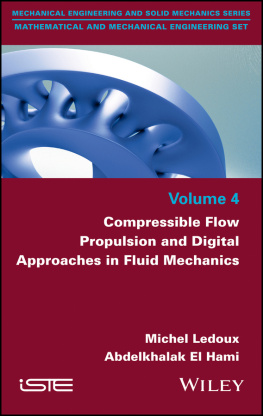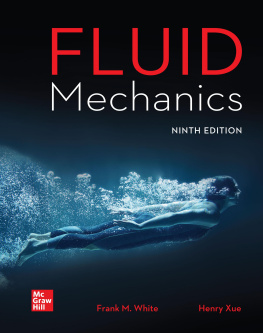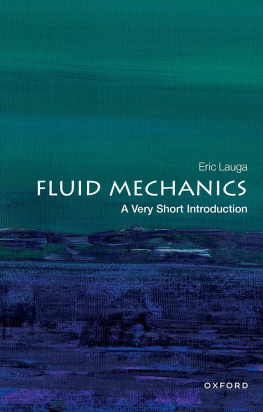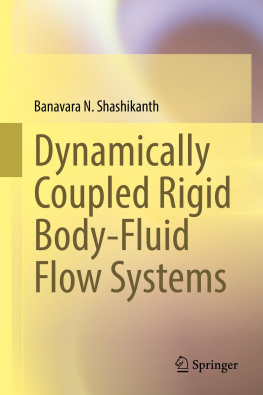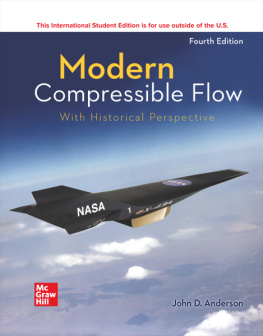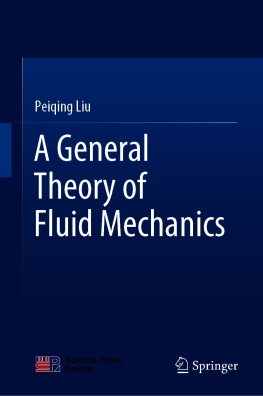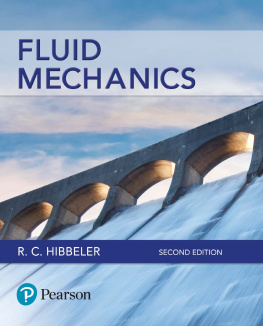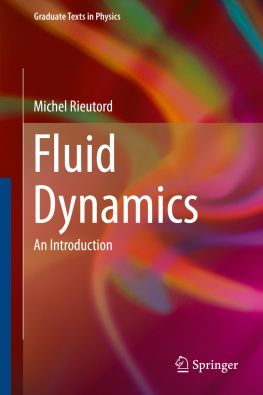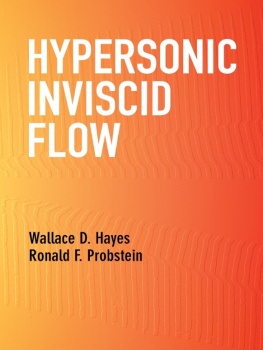Ledoux Michel - Compressible Flow Propulsion and Digital Approaches in Fluid Mechanics
Here you can read online Ledoux Michel - Compressible Flow Propulsion and Digital Approaches in Fluid Mechanics full text of the book (entire story) in english for free. Download pdf and epub, get meaning, cover and reviews about this ebook. year: 2017, genre: Children. Description of the work, (preface) as well as reviews are available. Best literature library LitArk.com created for fans of good reading and offers a wide selection of genres:
Romance novel
Science fiction
Adventure
Detective
Science
History
Home and family
Prose
Art
Politics
Computer
Non-fiction
Religion
Business
Children
Humor
Choose a favorite category and find really read worthwhile books. Enjoy immersion in the world of imagination, feel the emotions of the characters or learn something new for yourself, make an fascinating discovery.
- Book:Compressible Flow Propulsion and Digital Approaches in Fluid Mechanics
- Author:
- Genre:
- Year:2017
- Rating:3 / 5
- Favourites:Add to favourites
- Your mark:
- 60
- 1
- 2
- 3
- 4
- 5
Compressible Flow Propulsion and Digital Approaches in Fluid Mechanics: summary, description and annotation
We offer to read an annotation, description, summary or preface (depends on what the author of the book "Compressible Flow Propulsion and Digital Approaches in Fluid Mechanics" wrote himself). If you haven't found the necessary information about the book — write in the comments, we will try to find it.
Ledoux Michel: author's other books
Who wrote Compressible Flow Propulsion and Digital Approaches in Fluid Mechanics? Find out the surname, the name of the author of the book and a list of all author's works by series.
Compressible Flow Propulsion and Digital Approaches in Fluid Mechanics — read online for free the complete book (whole text) full work
Below is the text of the book, divided by pages. System saving the place of the last page read, allows you to conveniently read the book "Compressible Flow Propulsion and Digital Approaches in Fluid Mechanics" online for free, without having to search again every time where you left off. Put a bookmark, and you can go to the page where you finished reading at any time.
Font size:
Interval:
Bookmark:

- 3 One-dimensional Compressible Flows: Irreversible Flows
- 4 Modeling and Numerical Simulations
- 5 Numerical Simulation of a Vertical-axis Wind Turbine
- 1 The Flow of Viscous Fluids. Flow in the Vicinity of a Wall: Boundary Layers and Films
- 2 One-dimensional Compressible Flows: Fully Reversible Flows
- Figure 2.2. Displacement of the representative point of the flow on the
 curve.
curve.
a) Subsonic flow in the converging and diverging parts. b) Sonic flow at the throat, subsonic flow in the converging and diverging parts. c) Sonic flow at the throat, subsonic flow in the converging part and supersonic flow in the diverging part
- Figure 2.2. Displacement of the representative point of the flow on the
- 3 One-dimensional Compressible Flows: Irreversible Flows
- 4 Modeling and Numerical Simulations
- 5 Numerical Simulation of a Vertical-axis Wind Turbine
Mathematical and Mechanical Engineering Set
coordinated by
Abdelkhalak El Hami
Volume 4
Michel Ledoux
Abdelkhalak El Hami

First published 2017 in Great Britain and the United States by ISTE Ltd and John Wiley & Sons, Inc.
Apart from any fair dealing for the purposes of research or private study, or criticism or review, as permitted under the Copyright, Designs and Patents Act 1988, this publication may only be reproduced, stored or transmitted, in any form or by any means, with the prior permission in writing of the publishers, or in the case of reprographic reproduction in accordance with the terms and licenses issued by the CLA. Enquiries concerning reproduction outside these terms should be sent to the publishers at the undermentioned address:
ISTE Ltd
27-37 St Georges Road
London SW19 4EU
UK
www.iste.co.uk
John Wiley & Sons, Inc.
111 River Street
Hoboken, NJ 07030
USA
www.wiley.com
ISTE Ltd 2017
The rights of Michel Ledoux and Abdelkhalak El Hami to be identified as the authors of this work have been asserted by them in accordance with the Copyright, Designs and Patents Act 1988.
Library of Congress Control Number: 2016959823
British Library Cataloguing-in-Publication Data
A CIP record for this book is available from the British Library
ISBN 978-1-78630-112-3
Mathematical physics was brought into existence by the development of mechanics. It originated in the study of the planetary motions and of the falling of heavy bodies, which had led Newton to formulate the fundamental laws of mechanics, as early as 1687. Even though the mechanics of continuous media, first as solid mechanics, and later as fluid mechanics, is a more recent development, its roots can be found in Isaac Newtons Philosophiaenaturalis principia mathematica (Mathematical Principles of Natural Philosophy), several pages of which are dedicated to the falling streams of liquid.
Applications of fluid mechanics to irrigation problems date back to antiquity, but the subject gained a key status during the industrial revolution. Energetics was vital to the development of knowledge-demanding, specialized industrial areas such as fluid supply, heat engineering, secondary energy production or propulsion. Either as carrier of sensible heat or as core of energy production processes, fluid is ubiquitous in all the high-technology industries of the century: aeronautics, aerospace, automotive, industrial combustion, thermal or hydroelectric power plants, processing industries, national defense, thermal and acoustic environment, etc.
Depending on the target audience, there are various approaches to fluid mechanics. Covering this diversity is what we are striving for in this work.
Regardless of the degree of difficulty of the approached subject, it is important for the reader to reflect on it while being fully aware of the laws to be written in one form or another. Various approaches to fluid mechanics are illustrated by examples in this work.
First of all, the student will have the opportunity to handle simplified tools, allowing him/her a convenient first approach of the subject. On the other hand, the practitioner will be provided with elementary dimensioning means.
Other problems may justify or require a more complex approach, involving more significant theoretical knowledge, in particular of calculus. This is once again a point on which students and practitioners who already master these subjects can converge.
A third approach, which is essential for todays physics, especially when dealing with problems that are too complex to be accurately solved by simple calculations, resorts to numerical methods. This work illustrates these remarks.
Problem resolution relies in each chapter on reviews of fundamental notions. These reviews are not exhaustive, and the reader may find it useful to go back to textbooks for knowledge consolidation. Nevertheless, certain proofs referring to important points are resumed. As already mentioned, what matters is that the reader has a good grasp of what he/she writes.
Given that we target wide audiences, the deduction or review of general equations can be found in the appendices, to avoid the book becoming too cumbersome.
The attempt to effectively address audiences with widely varied levels of knowledge, expertise or experience in the field may seem an impossible task.
Drawing on their experience of teaching all these categories of audiences, the authors felt motivated and encouraged to engage in this daring enterprise.
Exploring subjects such as propulsion, compressible flows, and the numerical approach to Fluid Mechanics, this book primarily focuses on more complex problems, particularly on examples of industrial applications.
In of this second volume, the subject of viscous fluids is resumed from an analytical perspective: the structure of flows at boundaries is taken into account; the boundary layer theory is extensively used; significant attention is given to integral methods; an introduction to this field in relation to non-Newtonian fluids is provided; viscous flows through piping systems are examined; some particular types of unsteady boundary layers are also addressed.
In high velocity fluid flows, the combination of thermodynamics and mechanics leads to behaviors that are highly characteristic of compressible fluids. Two chapters of this book focus on this part of fluid mechanics, a very important one especially in aeronautics and aerospace. The physics of nozzles, generators of jets producing the thrust of jet and rocket engines, is approached within the framework of one-dimensional flows.
is dedicated to fully reversible, compressible one-dimensional flows.
focuses on the emergence of local irreversibilities in such flows. The development of the theory of straight shock waves uses the example and the positioning of such shock waves in a nozzle.
The schematic and simplified form of flow is applicable to many practical cases and it validates the models described in the above mentioned chapters. In many cases, the high complexity of the flow renders oversimplification inappropriate. This is especially valid for turbulent or vortex flows in industrial applications. At present, the engineer or researcher has privileged access to computation tools covering a wide range of capacities.
Next pageFont size:
Interval:
Bookmark:
Similar books «Compressible Flow Propulsion and Digital Approaches in Fluid Mechanics»
Look at similar books to Compressible Flow Propulsion and Digital Approaches in Fluid Mechanics. We have selected literature similar in name and meaning in the hope of providing readers with more options to find new, interesting, not yet read works.
Discussion, reviews of the book Compressible Flow Propulsion and Digital Approaches in Fluid Mechanics and just readers' own opinions. Leave your comments, write what you think about the work, its meaning or the main characters. Specify what exactly you liked and what you didn't like, and why you think so.

